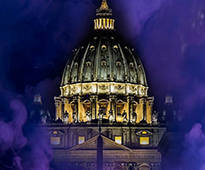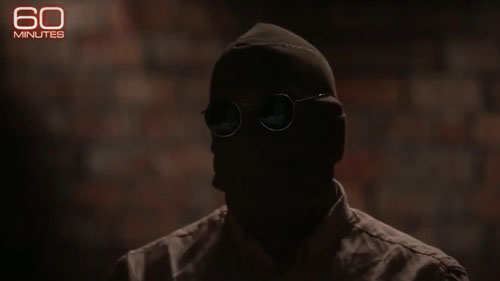| Recent Featured Videos and Articles | Eastern “Orthodoxy” Refuted | How To Avoid Sin | The Antichrist Identified! | What Fake Christians Get Wrong About Ephesians | Why So Many Can't Believe | “Magicians” Prove A Spiritual World Exists | Amazing Evidence For God | News Links |
| Vatican II “Catholic” Church Exposed | Steps To Convert | Outside The Church There Is No Salvation | E-Exchanges | The Holy Rosary | Padre Pio | Traditional Catholic Issues And Groups | Help Save Souls: Donate |  |









 " />
" /> " />
" /> " />
" /> " />
" /> " />
" />




Unitatis Redintegratio – Vatican II’s Decree on Ecumenism
Go back to The Vatican II Revolution
1. Unitatis Redintegratio – Vatican II’s Decree on Ecumenism.
At the very beginning of its Decree on Ecumenism, Vatican II teaches that almost everyone longs for a truly universal Church, whose mission is to convert the world to the Gospel. What is the truly universal Church whose mission is to convert the world to the Gospel? It’s the Catholic Church, of course, which alone is the one true Church of Christ. So what is Vatican II talking about, then? Why is Vatican II teaching that almost everyone longs for the truly universal Church of Christ when we already have it? The answer is that Vatican II teaches that people must long for the true Catholic Church because it teaches that it does not yet exist! For those who doubt that Vatican II was here denying that the Catholic Church exists, we will quote John Paul II’s own interpretation of this passage.
Here we see that John Paul II himself confirmed that the longing for the one visible Church of Christ is a longing on both sides – Catholic and non-Catholic, which means that in its Decree on Ecumenism (from which John Paul II was quoting), Vatican II was indeed longing for the one universal Church of Christ. Vatican II was therefore denying that the Catholic Church is the one universal Church of Christ.
Unitatis Redintegratio also affirmed that all baptized professing “Christians” are in communion with the Church and have a right to the name Christian, while not mentioning anything about the necessity for them to convert to the Catholic faith for salvation.
Notice that Vatican II teaches that these Protestant and schismatic sect members are in communion with the Catholic Church (albeit partial), and brothers of the same Church, with a right to the name Christian. The Catholic Church, on the other hand, teaches that they are outside the communion of the Church and alien to its faithful. This directly contradicts the teaching of Vatican II:
The following quotation is from an article that appeared in a publication that is widely read and fully approved by the Vatican II sect, St. Anthony Messenger. We can see how this “approved” publication understood the teaching of Vatican II’s Decree on Ecumenism.
Has Renee misunderstood Vatican II? No, we just showed that Unitatis Redintegratio does indeed teach this very thing. Now we will see that it denies that the Church is fully Catholic and affirms that the aforementioned sects have salvation.
Here, in #4 of the same Decree on Ecumenism, Vatican II denies that the Church of Christ is fully Catholic! If you believe this you cannot even say the Apostles’ Creed: “I believe in… the holy Catholic Church.” You would have to say, “I believe in the not fully Catholic Church.” But why would Vatican II assert such a ridiculous heresy? There is a reason. The word Catholic means “universal.” As we saw already, Vatican II rejects that the Catholic Church is the universal Church of Christ by teaching that almost everyone longs for the universal Church, as if it doesn’t exist.
The Vatican II religion holds that the Church of Christ is bigger than the Catholic Church. Since Vatican II’s Decree on Ecumenism denies that the Catholic Church is the universal Church of Christ by longing for such a Church to exist, it follows logically that Vatican II would teach that ”the Church” (i.e., the universal Catholic Church) is not able to fully realize its catholicity/universality, due to “divisions among Christians.” In other words, according to the clear teaching of Vatican II, divisions among the countless Protestant sects, Eastern Schismatic sects and the Catholic Church prevent the universal Church (of which we are all members according to Vatican II) from fully realizing its true catholicity (universality).
All of this is a definite confirmation that Vatican II taught that heretical and schismatic sects make up the Church of Christ. Vatican II’s words about the universality of the Church of Christ being impaired by divisions among these sects would not make sense unless it held that these sects make up part of the Church of Christ. With that explained, we will quote Pope Clement VI and Pope Leo XIII to contradict this awful heresy of Vatican II.
As we can see, when heretics leave the Catholic Church they don’t break its universality or catholicity. They simply leave the Church. But not according to the Decree on Ecumenism of Vatican II:
According to this commentator, Vatican II taught that the Protestants and schismatics weren’t at fault for leaving the Catholic Church; both sides were to blame. Has Daley misunderstood Vatican II? No, Vatican II indeed teaches this very thing by this astounding statement:
Vatican II, Unitatis Redintegratio #3: “The children who are born into these Communities and who grow up believing in Christ cannot be accused of the sin involved in the separation, and the Catholic Church embraces them as brothers, with respect and affection.” (http://www.vatican.va/archive/hist_councils/ii_vatican_council/documents/vat-ii_decree_19641121_unitatis-redintegratio_en.html)
One must carefully consider this statement to get the full impact of its malice. Without any clarification or qualification given, Vatican II issues a general statement and excuses of the sin of separation (i.e. heresy and schism) all who, having been born into Protestant and schismatic communities, grow up in them “believing in Christ.” This is incredibly heretical. It would mean that one could not accuse any Protestant of being a heretic, no matter how anti-Catholic he is, if he had been born into such a sect! This directly contradicts Catholic teaching, as we saw (e.g. Leo XIII). All who reject even one dogma of the Catholic Faith are heretics and are guilty of severing themselves from the true Church.
Moving along, we come to # 3 of Vatican II’s Decree on Ecumenism:
Here we discover more heresy in # 3 of the Decree on Ecumenism. It asserts that “the life of grace” (sanctifying grace/justification) exists outside the visible boundaries of the Catholic Church. This is directly contrary to the solemn teaching of Pope Boniface VIII in the Bull Unam Sanctam.
Vatican II contradicted the dogma that there is no remission of sin outside the Catholic Church by asserting that one can possess the life of grace (which includes the remission of sins) outside the Catholic Church. And there is more heresy in the same section of the Decree on Ecumenism. Vatican II bluntly asserts that these communities it has been describing are means of salvation.
This is one of Vatican II’s worst heresies. It constitutes a rejection of the dogma Outside the Catholic Church There is No Salvation.
In its Decree on Ecumenism Vatican II also teaches that non-Catholics bear witness to Christ by shedding their blood. The following paragraph implies that there are saints and martyrs for Christ in non-Catholic Churches, which is a heresy.
Basing himself on this teaching, John Paul II repeated and expanded upon this heresy many times.
The Catholic Church teaches dogmatically that outside the Church there are no Christian martyrs.
In its Decree on Ecumenism, Vatican II also teaches that Eastern heretics and schismatics help the Church to grow.
The Catholic Church teaches that heretics are the gates of Hell.
Another heresy which holds a prominent place in Vatican II’s Decree on Ecumenism is the constant expression of respect for the members of non-Catholic religions.
The Catholic Church does not look upon the members of non-Catholic religions with respect. The Church works and hopes for their conversion, but denounces and anathematizes as heretical sect members those who reject Catholic teaching:
Vatican II’s Decree on Ecumenism also teaches that in theological matters we must treat with non-Catholics on an equal footing.
Please notice how specifically the wording of Vatican II’s Decree on Ecumenism is condemned by Pope Pius XI’s encyclical against ecumenism. Vatican II recommends that we “treat” with heretics on an equal footing, while Pope Pius XI describes the heretics as willing to “treat” with the Church of Rome, but only as “equals with an equal”! When one reads the incredible specificity with which Vatican II contradicted the past teaching of the Magisterium, one can only ask: was Satan himself writing the documents of Vatican II?
Go back to The Vatican II Revolution
[6] Decrees of the Ecumenical Councils, 1990, Vol. 2, p. 908.
[7] http://www.vatican.va/archive/hist_councils/ii_vatican_council/documents/vat-ii_decree_19641121_unitatis-redintegratio_en.html)
[8] The Papal Encyclicals,by Claudia Carlen, Raleigh: The Pierian Press, 1990, Vol. 2 (1878-1903), p. 393.
[9] Renee M. Lareau, “ Vatican II for Gen-Xers,” St. Anthony Messenger, November 2005, p. 25.
[10] Decrees of the Ecumenical Councils, Vol. 2, p. 912.
[11] “Cardinal” Ratzinger, Dominus Iesus #17, approved by John Paul II, Aug. 6, 2000.
[12] Denzinger 570a.
[13] The Papal Encyclicals,Vol. 2 (1878-1903), p. 393.
[14] Michael J. Daley, “The Council’s 16 Documents” St. Anthony Messenger, Nov. 2005, p. 15.
[15] Decrees of the Ecumenical Councils, Vol. 2, p. 910.
[16] Denzinger 468.
[17] Decrees of the Ecumenical Councils, Vol. 2, p. 910.
[18] The Papal Encyclicals, Vol. 3 (1903-1939), pp. 121-122.
[19] Decrees of the Ecumenical Councils, Vol. 1, p. 578; Denzinger 714.
[20] Decrees of the Ecumenical Councils, Vol. 2, p. 912.
[21] The Encyclicals of John Paul II, Huntington, IN: Our Sunday Visitor Publishing Division, 1996, p. 914.
[22] The Encyclicals of John Paul II, p. 965.
[23] Denzinger 247.
[24] Denzinger 714.
[25] Decrees of the Ecumenical Councils, Vol. 2, pp. 915-916.
[26] Decrees of the Ecumenical Councils, Vol. 1, p. 113.
[27] Denzinger 351.
[28] http://www.vatican.va/archive/hist_councils/ii_vatican_council/documents/vat-ii_decree_19641121_unitatis-redintegratio_en.html
[29] Decrees of the Ecumenical Councils, Vol. 1, p. 233.
[30] Denzinger 246.
[31] Decrees of the Ecumenical Councils, Vol. 1, p. 31.
[32] Decrees of the Ecumenical Councils, Vol. 2, p. 914.
[33] The Papal Encyclicals, Vol. 3 (1903-1939), p. 315.
Sign up for our free e-mail list to see future vaticancatholic.com videos and articles.
Recent Content
^